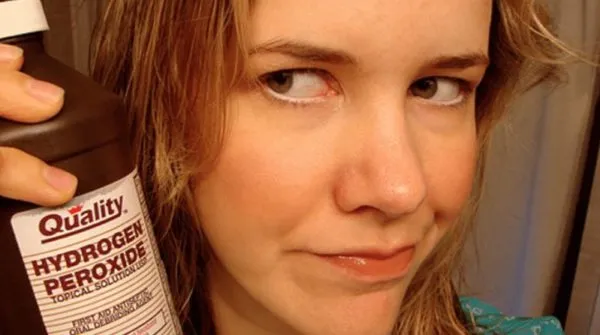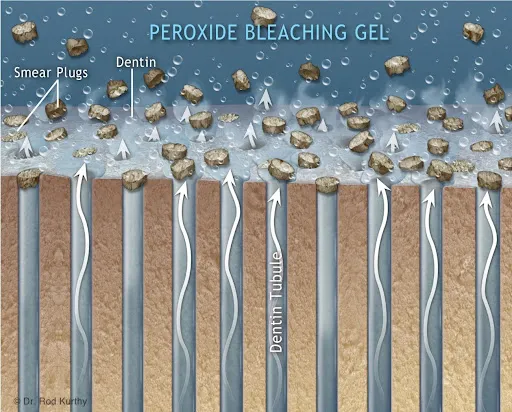Skin whitening has become a prevalent practice across the globe, with various methods employed to achieve a brighter, more even skin tone. Among these methods, peroxide skin whitening has gained attention. This guide provides a comprehensive overview of peroxide skin whitening, its mechanisms, applications, safety considerations, and alternatives. Understanding the intricacies of this process is crucial for making informed decisions and ensuring skin health. This guide aims to provide clarity and practical information to navigate the world of peroxide skin whitening safely and effectively, helping you achieve your desired results while safeguarding your skin.
Peroxide Skin Whitening What Is It
Peroxide skin whitening involves using hydrogen peroxide, a chemical compound commonly used as an antiseptic and bleaching agent, to lighten the skin. The process typically involves applying diluted hydrogen peroxide solutions to the skin. The goal is to reduce the concentration of melanin, the pigment responsible for skin color, leading to a lighter complexion. Peroxide is often marketed for spot treatments to address hyperpigmentation, such as age spots and sun damage. However, its use for overall skin whitening is also practiced, and understanding its potential effects is crucial before considering it as a skin-lightening method.
How Does Peroxide Skin Whitening Work
The mechanism behind peroxide skin whitening centers on hydrogen peroxide’s ability to oxidize melanin. When applied to the skin, hydrogen peroxide breaks down melanin molecules, thereby reducing their concentration. This oxidation process effectively lightens the skin. The effectiveness of peroxide skin whitening depends on several factors, including the concentration of the peroxide solution, the duration of application, and the individual’s skin type. The process aims to penetrate the upper layers of the skin, targeting the melanin produced by melanocytes. However, the extent of the impact can vary, and it’s essential to understand both the positive and negative outcomes associated with this process, which can depend on the skin’s sensitivity and existing conditions.
The Science Behind Peroxide Skin Whitening

At a molecular level, the whitening process involves the disruption of the melanin structure. Hydrogen peroxide, a strong oxidizing agent, reacts with melanin, causing it to break down into smaller, less pigmented molecules. This process is known as oxidation. The effectiveness of this reaction depends on the concentration of hydrogen peroxide, the pH of the solution, and the presence of other substances. Furthermore, the skin’s natural protective mechanisms, like antioxidants, may impact the efficacy of the bleaching process. While peroxide can lighten the skin, its effect isn’t always permanent. Skin cells naturally produce melanin, which means regular maintenance might be required to sustain the desired results. Understanding the science helps to make informed choices and manage expectations regarding skin whitening.
Peroxide Skin Whitening Applications
Peroxide skin whitening is used for a range of purposes, the most common being to reduce the appearance of dark spots, such as sunspots or age spots. It can also be used to even out skin tone, reducing hyperpigmentation caused by acne scars or other skin conditions. Some individuals use peroxide to lighten their overall skin tone, though this is less common and requires careful consideration. Peroxide can be found in various over-the-counter products, often in diluted forms, such as creams, lotions, and serums. It’s essential to use these products according to instructions to avoid adverse reactions. Moreover, peroxide is also a key ingredient in professional skin bleaching treatments, which typically involve higher concentrations and must be administered by trained professionals.
Peroxide Concentrations and Usage
The concentration of hydrogen peroxide is a crucial factor when using it for skin whitening. Over-the-counter products typically contain low concentrations, usually between 3% and 6%. Higher concentrations may be available for professional use, but these should only be applied by qualified professionals. The application method is also important. For spot treatments, a small amount of diluted peroxide is applied directly to the affected area. If used for overall skin whitening, the solution is usually applied evenly to the entire area. However, prolonged or excessive use of higher concentrations can lead to skin irritation, chemical burns, or other adverse effects. Following the product’s instructions and consulting with a dermatologist are therefore essential before proceeding.
Safe Peroxide Skin Whitening Practices

To ensure safe peroxide skin whitening, several practices should be followed. First, always perform a patch test before applying the product to a larger area. This helps determine if your skin is sensitive to the solution. Start with a low concentration of hydrogen peroxide and gradually increase it only if necessary and tolerated. Apply the peroxide in a thin, even layer and avoid getting it into your eyes or mouth. Protect your skin from sun exposure by using sunscreen with a high SPF, as peroxide can make your skin more sensitive to the sun. Moisturize your skin regularly to prevent dryness and irritation. If you experience any adverse reactions, such as redness, burning, or blistering, discontinue use immediately and consult a dermatologist.
Preparing Your Skin
Preparing your skin before using peroxide skin whitening can optimize the results and reduce potential side effects. Begin by cleansing your skin thoroughly with a gentle cleanser to remove dirt, oil, and makeup. Exfoliating your skin gently can help remove dead skin cells, allowing the peroxide to penetrate more effectively. Always ensure your skin is completely dry before applying the solution. If you have sensitive skin, consider using a moisturizer to create a barrier before application. It’s also beneficial to avoid other potentially irritating skincare products like retinol or strong acids a few days before and after treatment. Consult with a dermatologist if you have any concerns regarding your skin type and preparation techniques.
Application Techniques
Proper application techniques are vital for the effectiveness and safety of peroxide skin whitening. Using a cotton swab or a clean brush, apply the solution evenly to the target area. Avoid applying too much product, as it can lead to irritation. For spot treatments, focus on the specific area you want to lighten. If you are whitening a larger area, ensure even coverage. Adhere to the recommended application time, as leaving the solution on for too long can cause adverse reactions. After the recommended time, rinse your skin thoroughly with cool water. Follow up with a gentle moisturizer to soothe the skin. For best results, incorporate this process into your skincare routine, as suggested by the product label and your dermatologist.
Post-Whitening Skincare

Post-whitening skincare is crucial for maintaining results and preventing skin damage. Immediately after applying peroxide, moisturize your skin to prevent dryness. Use a gentle, hydrating moisturizer that is free of harsh chemicals. Always use a broad-spectrum sunscreen with a high SPF to protect your skin from sun damage, as peroxide can make your skin more sensitive to sunlight. Avoid using harsh exfoliants or other irritating products immediately after treatment. It’s also beneficial to incorporate soothing ingredients like aloe vera or chamomile into your skincare routine to calm any irritation. Following a consistent skincare routine will help you achieve and maintain the desired skin tone while keeping your skin healthy.
Peroxide Skin Whitening Potential Risks
Peroxide skin whitening carries several potential risks that individuals must be aware of before using it. The most common side effects include skin irritation, redness, and burning sensations. Higher concentrations of peroxide can cause chemical burns, leading to blistering and scarring. Long-term use may result in premature aging and an increased risk of skin cancer due to sun sensitivity. Additionally, the effectiveness of peroxide skin whitening is not always guaranteed, and results may vary. Some people may not experience the desired lightening effects. Considering the risks and individual skin conditions is essential to make informed decisions and seek professional advice when needed. Be aware of the potential risks and consult a professional before starting.
Side Effects and Precautions
Common side effects include redness, itching, and dryness. More severe reactions can involve blistering, peeling, and changes in skin pigmentation. To minimize these risks, start with low concentrations of peroxide and perform a patch test. Avoid using peroxide on broken or irritated skin. Protect your skin from the sun by wearing protective clothing and using sunscreen. If you experience any adverse effects, stop using the product immediately and consult a dermatologist. Do not use higher concentrations than recommended, and never mix peroxide with other chemicals, as it can lead to unexpected reactions. Always use peroxide in a well-ventilated area. Always prioritizing safety and consulting with professionals ensures safe and effective skin care.
Alternatives to Peroxide Skin Whitening

Several alternatives to peroxide skin whitening offer varying degrees of effectiveness and safety. Hydroquinone is a commonly used skin-lightening agent, though it is subject to regulations due to potential side effects. Other options include topical retinoids, which can help to exfoliate and even out skin tone. Chemical peels, performed by dermatologists, can effectively lighten skin. Laser treatments offer a more advanced method for targeting hyperpigmentation. Natural remedies such as kojic acid, arbutin, and vitamin C are also used. The best alternative depends on your skin type, the severity of the discoloration, and your personal preferences. Consulting with a dermatologist is essential for determining the most appropriate and safe alternative for your specific needs and goals.
Other Skin Whitening Methods
In addition to peroxide and other alternatives, various other skin-whitening methods are available. Microdermabrasion involves exfoliating the top layer of skin to improve texture and reduce the appearance of dark spots. Intense pulsed light (IPL) therapy uses light energy to target melanin, reducing pigmentation. Glutathione, an antioxidant, is sometimes used in oral supplements or injections to lighten the skin, though the effectiveness and safety of this method are debated. Other topical creams containing ingredients like azelaic acid and niacinamide can also contribute to skin lightening. The choice of method depends on individual needs, skin type, and consultation with a professional. It is important to research all options before making a decision.
Peroxide Skin Whitening The Verdict
Peroxide skin whitening can be a potentially effective method for lightening the skin, particularly for spot treatments and reducing hyperpigmentation. However, it’s essential to approach this method with caution. Understanding the risks, following safe practices, and consulting with a dermatologist before starting is crucial. Alternatives to peroxide skin whitening are available, and may be more appropriate depending on individual skin conditions and desired outcomes. Always prioritize skin health and safety, and make informed decisions. By weighing the pros and cons, and seeking expert advice, you can determine whether peroxide skin whitening is suitable for your needs.
